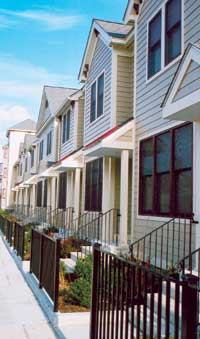Based on the financials, it would cost about $250,000 to develop each of the homeownership units, with HUD recouping only about $110,000 on the average sales price, according to Pyne. He knew this loss would cause heartburn in the agency, so MassHousing proposed a scenario where it would provide a construction loan to pay for this piece. “Our money would be taken out by sales proceeds,” he says.
After MassHousing developed the proposal, the next step for the tenants would the toughest: persuading HUD.
The Financier: Jim Drazen, realty specialist, HUD: While the Demo Dispo plan was intended to be flexible, Jim Drazen knew he was facing a challenge when the tenants at Franklin Park sought a home ownership portion in their development.
The first part of the plan that gave him pause was the financing. Under the tenants’ mortgage plan, a private bank or MassHousing would finance the project and HUD would provide a subsidy to pay the interest rate. “It [the original plan] would have provided a greater cost to the government over the life of the mortgage,” Drazen says.
Instead, the agency financed the Franklin Park project itself so there would be no interest to pay. “The intention was to conserve the Section 8 subsidy fund so that we weren’t covering the interest rate over a period of 15 years or more,” Drazen says.
The other issue was equally sticky: What would be the best way to handle appreciation of individual units and their eventual sale? Eventually, HUD agreed to accept a certain amount of money after the sale, an amount that would be determined on a sliding scale. The longer an owner stayed in the unit, the more money he or she would receive, with HUD’s share disappearing altogether if the owners lived in the property long enough. “The intention was to prevent speculation and profiteering and keep them affordable to subsequent low-income buyers,” Drazen says. “There was a compromise between appreciation and gain by the buyer.”
Those compromises showed how a vocal tenant group (with a good plan) can work with HUD to get what it wants. “The constant throughout the process was the tenants’ enthusiasm and commitment to do it [the town-houses],” Drazen says.
